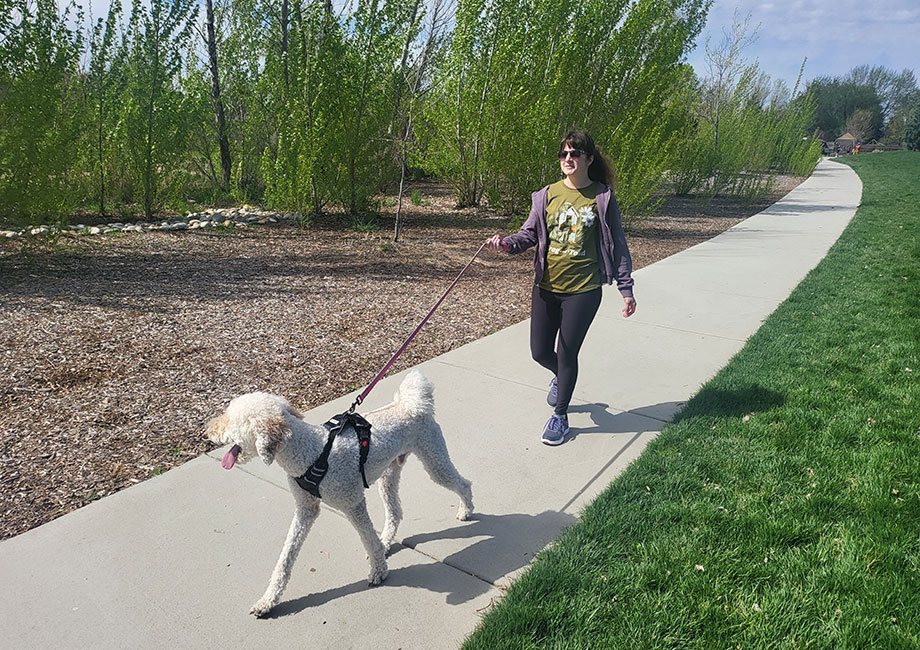We test and review fitness products based on an independent, multi-point methodology. If you use our links to purchase something, we may earn a commission. Read our disclosures.
Despite being overlooked and underappreciated, walking is an accessible form of exercise. One of my favorite ways to unwind that doesn’t involve resistance training, it’s a simple physical activity that doesn’t require much technique or equipment.
RELATED: How to Perfect Your Walking Technique
Since it offers a multitude of health benefits, I view walking as an essential component of a well-balanced fitness routine. However, do you need 10,000 steps a day to feel accomplished?
As a certified personal trainer (CPT) and longtime athlete, I’ll be the first to admit that’s a lofty fitness goal for the average person. But if you’re keen on hitting that benchmark, how long does it take to walk 10,000 steps? From exploring the origin of the 10,000-step goal to providing time estimates to diving into the health benefits, I’ll walk you through everything you need to know to make the most of your daily steps.
How Did Walking 10,000 Steps a Day Become the Benchmark?
Where did the idea of hitting 10,000 steps a day come from? The concept originated in the ’60s thanks to Dr. Yoshiro Hatano, a Japanese researcher who developed a pedometer called “manpo-kei,” which translates to “10,000-step meter.” This device was designed to encourage people to ramp up their physical activity and take control of their health.
That “magic number” equates to roughly five miles of walking, depending on your stride length. While that figure has become a popular benchmark, it’s far from a one-size-fits-all approach.
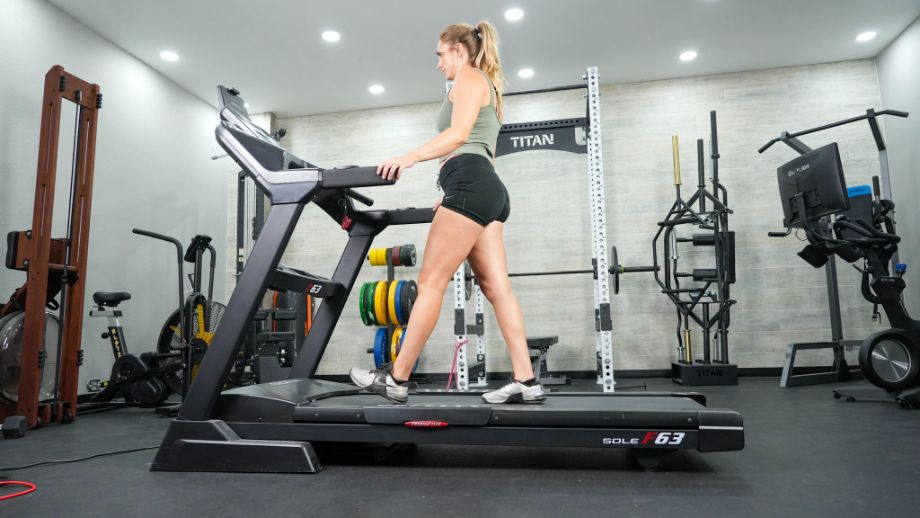
Interestingly, research indicates that you can “get away” with fewer steps. According to the National Institutes of Health1, around 7,500 daily steps can significantly lower the risk of premature death among older adults. So, while 10,000 is an admirable goal to still shoot for, you don’t have to reach that benchmark to enjoy the benefits of walking.
The main takeaway here is that consistency is key.
RELATED: How Many Steps In a Mile?
How Long Does It Take to Walk 10,000 Steps?
The time it takes to walk 10,000 steps varies based on factors such as pace, stride length, and fitness level. In some cases, you also have to account for external elements like terrain and weather.

For most people, 10,000 steps equals about five miles. Using that distance, here’s a breakdown of the estimated times based on specific walking paces:
- Leisurely pace: About 100 minutes (3.0 mph)
- Moderate pace: About 80 minutes (3.5 mph)
- Brisk walking pace: About 70 minutes (4.0 mph)
So, if you go slow, you will have to walk for around 1.5 hours to hit 10,000 steps. Picking up the pace by 0.5 mph can cut that number down by about 20 minutes. Meanwhile, a brisk walk will allow you to hit 10,000 steps (and burn plenty of calories) in just over an hour.
RELATED: Walking Calorie Calculator
Health Benefits of Walking
Walking provides numerous physical and mental health benefits, making it a valuable and versatile form of exercise for people of all ages.
Here’s why you should make sure to get your steps in every day:
Can Improve Your Cardiovascular Health
It’s no secret that walking is one of the best forms of cardiovascular exercise, as it can help lower your blood pressure and improve cholesterol levels. Interestingly, a 2013 study2 found that brisk walking can lower your risk of hypertension, high cholesterol, and diabetes as much as running.
RELATED: Cardiovascular Fitness
May Enhance Cognitive Function
Walking has been shown to improve cognitive function3 and reduce the risk of cognitive decline in older adults. In addition, a University of Maryland study4 found that brain connectivity and memory improved in older adults after walking, which is especially important when discussing health conditions like Alzheimer’s disease.
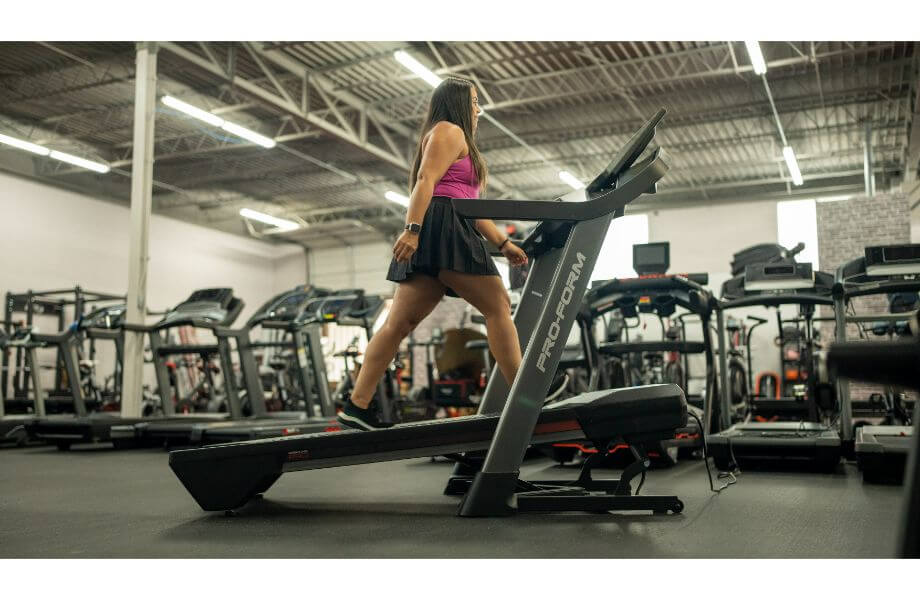
Can Help With Weight Loss and Weight Management
Walking is an effective way to burn calories and support your weight-loss efforts, especially when combined with a protein-focused diet that minimizes ultra-processed foods. The American Diabetes Association highlights that walking can improve insulin sensitivity5—a key factor in controlling your weight and reducing your risk of obesity-related complications.
RELATED: Treadmill Walking Workout for Weight Loss
Can Reduce Your Risk of Chronic Diseases
Regular exercise—including walking—can lower your risk of chronic diseases6 such as type 2 diabetes, heart disease, stroke, and some cancers. The Center for Disease Control (CDC) emphasizes that walking is a form of moderate-intensity exercise7 that can help manage and prevent chronic health conditions.
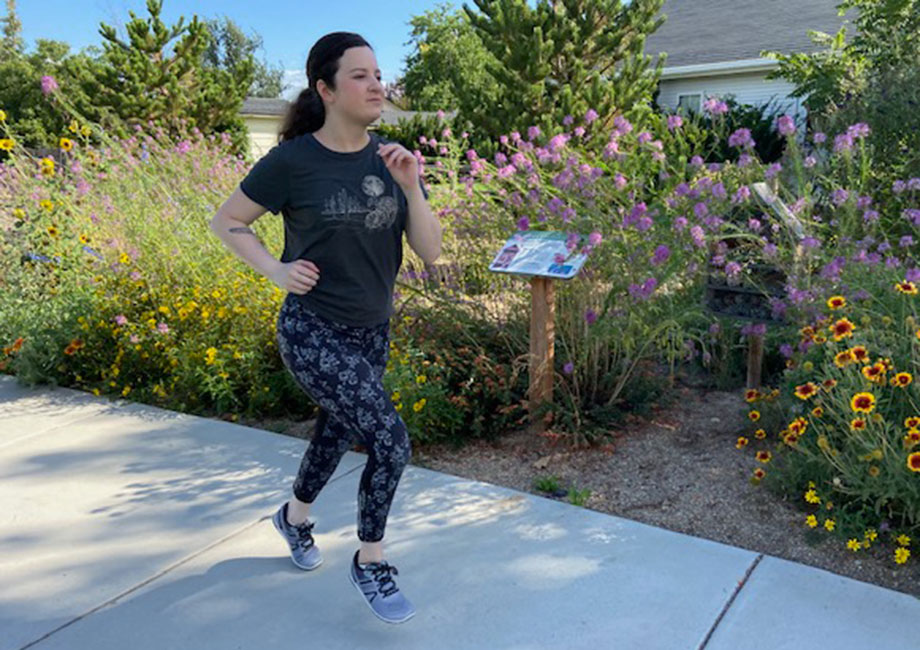
Can Enhance Your Sleep Quality
Engaging in physical activity like walking can improve your sleep quality and duration. According to the National Sleep Foundation8, people who exercise regularly and spend less time sitting reported better and longer sleep compared to those who are sedentary.
Can Boost Your Mood
Physical activity triggers the release of endorphins—otherwise known as the “feel-good” hormones. A study in JAMA Psychiatry9 reported that adults who meet the physical activity recommendations (equivalent to 2.5 hours per week of brisk walking) have a lower risk of depression compared to adults who do not participate in physical activity.
RELATED: Exercise and Mental Health
Creative Ways to Hit Your Daily Step Goal
Achieving your daily step goal doesn’t have to be daunting. It also doesn’t have to be boring. Whether you work from home or in an office, there are plenty of creative ways to incorporate more steps into your day.
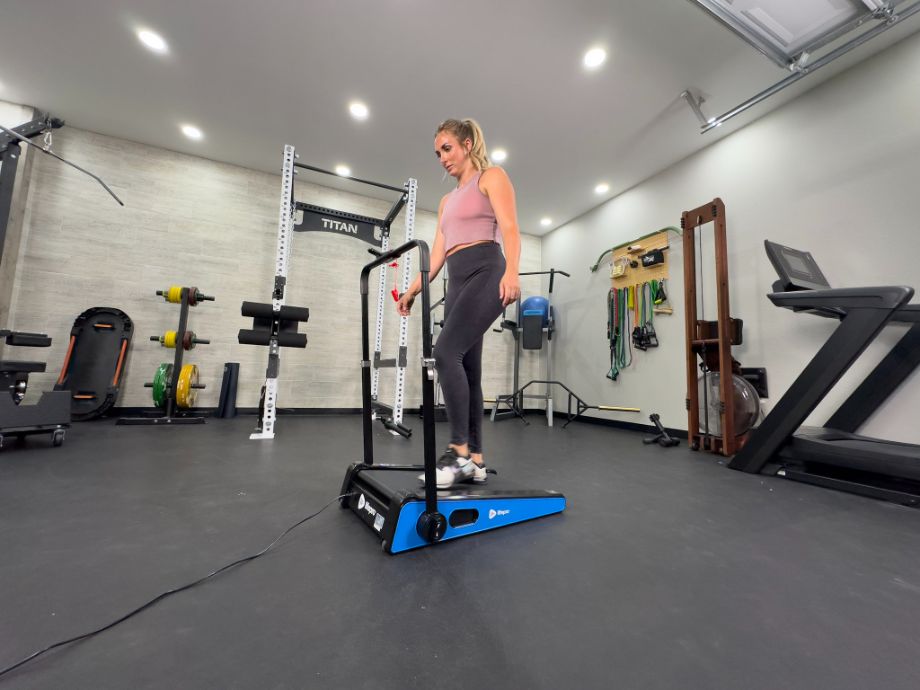
Here are some of my favorite methods to make a dent in that 10,000-step target:
- Invite friends and family: Who says you have to take the #solo approach? Make fitness a fundamental part of your social circle by inviting friends and family to join you for a daily stroll.
- Join a walking group or club: Being part of a community can make walking (or any activity) more enjoyable while providing an extra layer of motivation and self-accountability.
- Listen to a podcast: You may not hit 10,000 steps in a single episode, but you can knock out a sizable chunk of your daily goal while tuning in to your favorite podcast. Think of it as a way to improve your physical health while also stimulating your brain.
- Make walking part of your morning routine: A structured morning routine can set the stage for a successful day. In addition to brushing your teeth and brewing your morning coffee, go for a 30-minute walk to mentally and physically prepare for a productive workday.
- Sign up for charity walks or events: Local organizations often host charity walks that offer a fun, rewarding way to increase your step count while supporting a good cause.
- Incorporate 10-minute walk breaks: Break up your workday with 10-minute walks. This will give your mind a chance to rest and your body a chance to move around. Invite your colleagues to make it a group activity.
- Explore new places: Switch up your environment by strolling around new neighborhoods, parks, or nature trails. You can even do some #RetailTherapy and explore a new mall or shopping center as long as you don’t stop to look at a shiny item for too long.
- Take advantage of technology: Apps like Strava and Nike Run Club can keep track of all your walking data and encourage you to stay accountable.
RELATED: Best Walking Apps
Essential Walking Gear and Equipment
The right equipment can make your walks more comfortable, purposeful, and safer. Here’s a list of essential gear that can enhance your cardio experience:
- Walking shoes: The most crucial component is having comfortable shoes that provide adequate cushioning and arch support. Even if you can’t afford a high-end pair like the HOKA Bondi 8 (our best walking shoe overall), investing in a high-quality, budget-friendly option will still set you up for sustained success.
- Pedometer or step counter: Pedometers or step counters may not offer nearly as many features as other devices, but they’re still useful for keeping an accurate count of your total daily steps. Plus, they’re much more affordable, as you can pick up a pedometer for around $10 on Amazon.
- Fitness trackers or smartwatches: From heart-rate monitoring to calorie burning to step counting, wearables like the Apple Watch, Garmin, or Fitbit offer a wealth of tracking tools that can provide valuable insight into your walks and other types of workouts.
- Comfortable clothing: Whether you go for an outdoor walk or stick to a traditional steady-state treadmill session, you should wear breathable, moisture-wicking clothing that allows you to move without restrictions.
- Hydration gear: As a Floridian who lives in perpetual 90-degree weather, I always have my water bottle with me to stay on top of my hydration. In addition to drinking good ol’ H2O, I also recommend mixing in your favorite electrolyte powder to ensure you have sufficient levels of sodium, potassium, and chloride.
- Reflective gear: Safety is paramount. If you plan on early-morning or nighttime walks, make sure to have a reflective vest, hat, jacket, or other gear so drivers can clearly see you.
RELATED: Best Fitness Trackers
How Long Does It Take to Walk 10,000 Steps: Final Thoughts
Although hitting 10,000 steps a day may seem daunting, it’s an effective way to take care of your mind and body. While that five-figure goal is a lofty benchmark, any amount of walking can be beneficial, especially if you live a sedentary lifestyle. Start at a manageable pace and distance that suits your fitness level and gradually increase both as you build stamina and self-confidence.
With the right attitude and reliable gear, walking can go from a mindless exercise to a rewarding part of your exercise routine. So, lace up your most comfortable walking shoes, set your pedometer or fitness tracker, and enjoy the journey to physical and mental improvement one step at a time.
How Long Does It Take to Walk 10,000 Steps: FAQs
How many steps are in a mile?
Depending on your stride length and walking speed, there are about 2,000 to 2,500 steps in a mile.
How many steps are in 60 minutes of walking?
The number of steps in an hour of walking depends on your pace. The average person can take around 6,000 to 8,000 steps in an hour at a moderate walking speed.
Can you lose weight walking 10,000 steps a day?
While walking 10,000 steps a day will increase your energy expenditure, daily physical activity is only part of the equation. You must be in a calorie deficit to lose weight.
How long does it typically take to walk 10,000 steps?
It typically takes about 1.5 hours to walk 10,000 steps at a leisurely pace. You may be able to achieve that goal faster by increasing your pace and stride length.
References
- How many steps for better health? (2019, December 6). National Institutes of Health (NIH). https://www.nih.gov/news-events/nih-research-matters/how-many-steps-better-health
- Williams, P. T., & Thompson, P. D. (2013). Walking versus running for hypertension, cholesterol, and diabetes mellitus risk reduction. Arteriosclerosis, Thrombosis, and Vascular Biology, 33(5), 1085–1091. https://doi.org/10.1161/atvbaha.112.300878
- Kang, S. J., Kim, B. H., Lee, H., & Wang, J. (2021). The Beneficial Effects of Cognitive Walking Program on Improving Cognitive Function and Physical Fitness in Older Adults. Healthcare (Basel, Switzerland), 9(4), 419. https://doi.org/10.3390/healthcare9040419
- UMD study finds brain connectivity, memory improves in older adults after walking | University of Maryland | School of Public Health. (2023, May 23). https://sph.umd.edu/news/umd-study-finds-brain-connectivity-memory-improves-older-adults-after-walking
- The benefits of walking | American Diabetes Association. (n.d.). https://diabetes.org/health-wellness/fitness/benefits-walking
- Anderson, E., & Durstine, J. L. (2019). Physical activity, exercise, and chronic diseases: A brief review. Sports medicine and health science, 1(1), 3–10. https://doi.org/10.1016/j.smhs.2019.08.006
- Physical activity and your weight and health. (2023, December 27). Healthy Weight and Growth. https://www.cdc.gov/healthy-weight-growth/physical-activity/index.html
- Casselbury, K., & Casselbury, K. (2024, April 4). Want to sleep better? Move your body more. Sleep Foundation. https://www.sleepfoundation.org/sleep-news/increased-physical-activity-linked-to-sleep-quality
- Pearce M, Garcia L, Abbas A, et al. Association Between Physical Activity and Risk of Depression: A Systematic Review and Meta-analysis. JAMA Psychiatry. 2022;79(6):550–559. doi:10.1001/jamapsychiatry.2022.0609
Further reading

It’s the clash of two incline trainer treadmills in the NordicTrack 2950 vs X22i comparison. Read more

If you’re short on time but need a quick sweat, check out our 15-minute workout ideas. Read more

Despite being overlooked and underappreciated, walking is an accessible form of exercise. One of my favorite ways to unwind that doesn’t involve resistance training, it’s a simple physical activity that doesn’t require much technique or equipment. RELATED: How to Perfect Your Walking TechniqueSince it offers a multitude of health benefits, I view walking as an essential component of a well-balanced fitness routine. » Read more about: How Long Does It Take to Walk 10,000 Steps? An Expert Guide to Hitting Your Daily Step Goal » Read more

Despite being overlooked and underappreciated, walking is an accessible form of exercise. One of my favorite ways to unwind that doesn’t involve resistance training, it’s a simple physical activity that doesn’t require much technique or equipment. RELATED: How to Perfect Your Walking TechniqueSince it offers a multitude of health benefits, I view walking as an essential component of a well-balanced fitness routine. » Read more about: How Long Does It Take to Walk 10,000 Steps? An Expert Guide to Hitting Your Daily Step Goal » Read more

